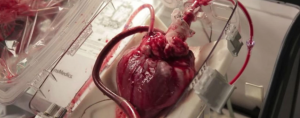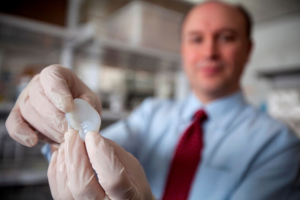By: Samreen Haque | UTS Staff Writer | SQ Online 2016-17
Until the mid-twentieth century, organ transplantation was the stuff of science fiction. Peter Mendawer’s 1960 discovery that the rejection of a transplant was an immune response paved the way for the success of procedures that would save hundreds of thousands of lives. Organ transplantation has come a long way since then, but the current state and demand for organ transplants is alarming and on the rise. 80,000 people are on an active waiting list in the US. While 13,500 transplants have been performed so far this year, this number is nowhere near where it should be. With these statistics, the desperation that many patients face is apparent. Despite medical and technological advances, and increased awareness of organ donation and transplantation, the gap between supply and demand continues to widen.
To meet this demand, new surgical techniques are being developed. For example, stem cell transplants have so far been used to grow kidneys and intestines. Artificial and implantable organs such as the fully-functioning synthetic hearts provided by SynCardia Systems, Inc. can buy patients a lot of time. While the goal of these organs is currently to hold patients over until a human organ becomes available, these artificial organs can last for years. Another company, TransMedics, has developed technology that enhances our ability to keep organs alive outside of the body and helps prolong the viability of an organ as is it transported over larger distances. In a TransMedics “heart in a box” device, a heart can be kept warm and beating until the transplant occurs.
Moreover, we are seeing breakthroughs in 3D-printing organs. Earlier this year the Bonassar Research Group from Cornell University was able to begin printing outer structures like ear tendons and ligaments, pushing researchers toward the possibility of printing internal organs. The method uses an “ink” made of living cells that can layer to create the complex organ after a few months in the printer. They can create live structures that grow inside and outside the body, allowing the host to accept the structure as its own once transplanted.
New techniques also pose exciting possibilities that will enhance the future of organ transplants. One example of this is xenotransplantation, or growing human organs in a different host. Potentially, this would enable the formation of human organs in an adoptive xenogeneic or foreign host, such as a pig, the harvesting of human cells, tissues or organs from that host and implantation in the individual from whom the stem cells were obtained as one way to generate histocompatible organs. This histocompatibility means that organs would have the necessary antigenic similarities to allow for transplantation without rejection. Another possibility is desensitization, or alteration of the immune system to allow patients to receive kidney transplant from any donor. Also on the horizon is the possibility of growing human organs out of plant structures, in which using the cellulose from fruits and vegetables can allow human cells the populate the structure and form an organ.
While these new methods may seem alarming and unnatural, the methods of organ transplantation that we all know to be familiar would not have been a reality had the fear of the unnatural deterred researchers.
[hr gap=”0″]
Sources:
- http://www.pbs.org/wgbh/aso/databank/entries/dm54ki.html
- http://healthland.time.com/2013/06/06/5-discoveries-that-will-change-the-future-of-organ-transplants/slide/more-lists/
- http://www.ncbi.nlm.nih.gov/pubmed/17494288
- https://www.theguardian.com/science/2016/jun/06/organ-transplants-chimera-pigs-geneticists-human-stem-cells-embryos-brains-injection
- https://optn.transplant.hrsa.gov/
- http://www.nytimes.com/2016/03/10/health/kidney-transplant-desensitization-immune-system.html?_r=0
- http://www.cnn.com/2016/06/10/health/transmedics-organs-box-vs/